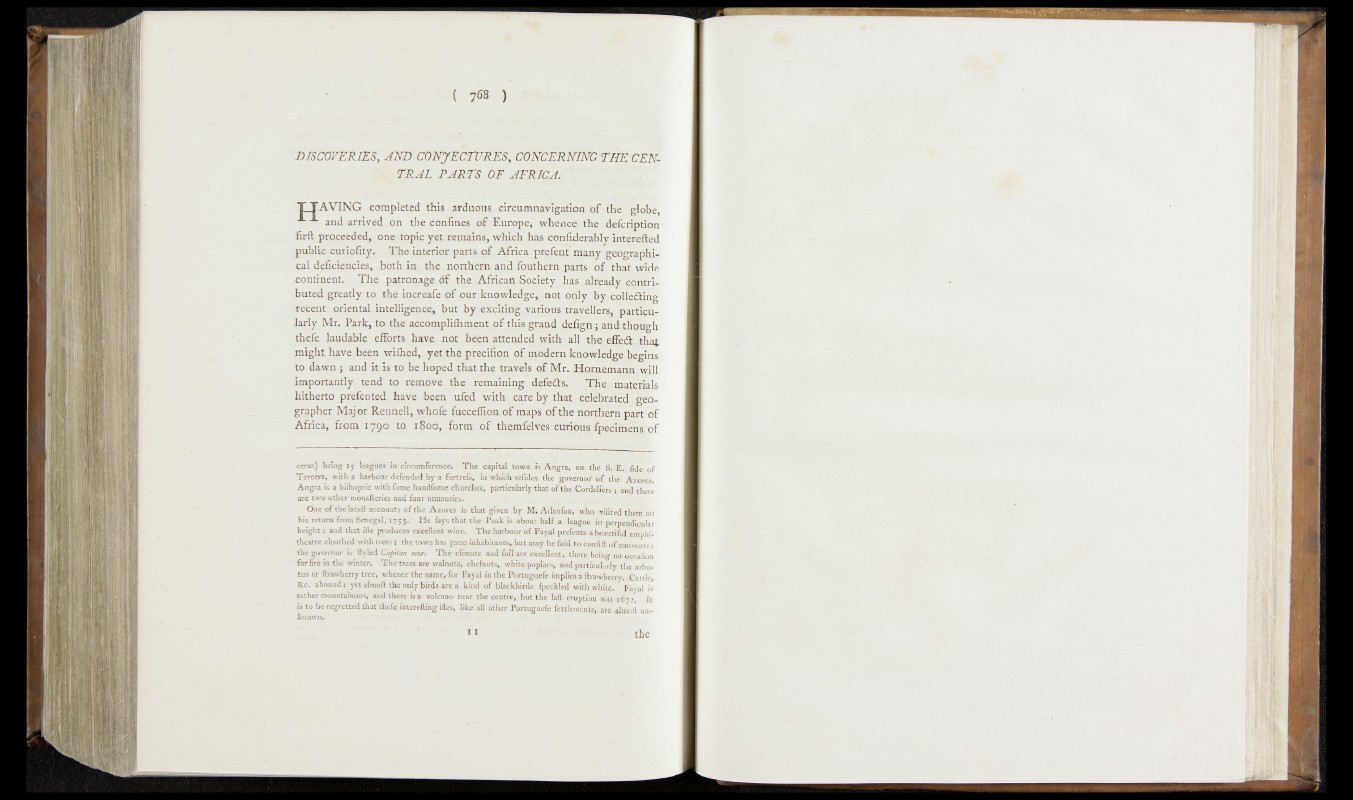
D IS C O V E R IE S , A N D C O N JÈ C fU R E S , C O N C E R N IN G T H E C E N -
v ^ T R A L D A R T S O F A F R IC A . \
T T A V IN G complete4 this arduous circumnavigation -of tbeefglqhei
and arrived, on the confines of^Europe, whence the jdefctiption
firft proceeded, one topic yet remains, w^jgh; has cqnfiderably in'terefted
public curiofity. The interior parts. of_Africa pre|eiat mapyJgg^gra,pihi-
cal defi^encies, .both in the northern and foutfisrn p a rts » S i’t f c t . P
•continent. T h e patronage <3f the African Society^ h
butedjgreatly to the. increafe p f our knowlpdge^ Dpt o ^|y by.c^ttiSfcng
^recent, oriental in te llig en c e but by excitingvarious ■tra.v.ellcrs.^pa.ilu-n-
larly Mr. Park, to the accomplifliment, o f this.gran,d d e f i g n ^ n o u g h
thefe laudable efforts have not been attended yvi^h all effe<fTtha£
m ig h t have been wifhed, ye t thé precifion o f mqitjern •knovs'k.dge begins
to dawn ; and it is to be hoped th a t the travels o f M r. Hornemann ilili
importantly, tend to remove th e r e m a i ^ g ^ fe& s ,, T h e j n a t ^ B i
hitherto j»refented fi^ve been ufed with care bv that
graphcr Major Rennell, whofejfucceffion o f maps o f the ngrflagrn p a ^ 0f
Africa, from 1790 to 1800, form o f themfélvèVeóéfens^^.F.i^ ^ ? ^ of
«eras) being 15 league« in circumference. The capital town is Angra, on the SvE..fide of
Tercera, with a harbonr defended by a fartreft, in which refides the governor of the Azores.
Angra is a bilhopric with fome handfome churches, particularly that of thé Cordeliers ; and there
are two other monafteries and font nunneries....
One of thelatfeft-acGounts of the Azores is that given by M. Adanfon, iw.lio -vifited them oil
his return from Senegal, 1753, He fays that the Peak is about half a league in perpendicular
height: and that ifle produces excellent wine. The harbour of Fayal prefents a beautiful amphitheatre
cloathed with trees; the town has 5000 inhabitants^ but may be faid to confid of convents ■
the governor, is ftyled Cafilan mor. The-climate and foil are excellent, there being, no occaiion
for fire in- the winter. The trees are walnuts, chefnnts, white poplars, and particularly- tire-arbutus
or ftrawberry tree, whence the name,-for.Fayal in the. Portuguefe implies a ftrawberry. -Cattle,
&c. abound: yetalmoft the only-birds are .a kind of. blackbirds fpeckled with white. Fayal is
rather mountainous, and there is a-volcano near tKe; centre, but the lad eruption wa3 1672. It
is to be regretted that thefe interefting ifles, like -all other Portuguefe fettleincnts, are almoVt un-
known,
XI the